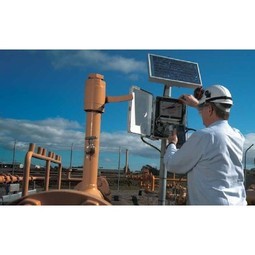Customer Company Size
Mid-size Company
Region
- Europe
Country
- France
Product
- ICONICS’ GENESIS64™ HMI/SCADA suite
- MobileHMI™ data mobility suite
- Hyper Historian™
Tech Stack
- Microsoft Windows Server 2012 R2
- Windows SQL 2012
- Cloud-based servers
Implementation Scale
- Enterprise-wide Deployment
Impact Metrics
- Productivity Improvements
- Environmental Impact Reduction
Technology Category
- Application Infrastructure & Middleware - Data Exchange & Integration
Applicable Industries
- Utilities
- Cities & Municipalities
Applicable Functions
- Facility Management
- Maintenance
Use Cases
- Building Energy Management
- Energy Management System
Services
- System Integration
About The Customer
R-CUA, headquartered in Strasbourg, France, specialize in the design, financing, development and operation of heat networks (biomass, geothermal energy), power stations and associated energy sources. Also known as the Urban Heat Networks of Alsace, R-CUA/R-CUE maintains 30 million euros worth of capital, with nine heating and cooling system networks over 48 kilometers in Alsace. They provide heat for the equivalent of 30,000 household units.
The Challenge
R-CUA, a company specializing in the design, financing, development and operation of heat networks, power stations and associated energy sources, sought an automation software solution that would monitor the power plant and heat distribution in the city of Strasbourg in real time. The company required that the software be able to provide information via web browser as well as via mobile devices. In addition, the company sought to manage consumption and potentially save on energy costs. A primary location involved in the installation is the Eco2 Wacken plant, located in Strasbourg. The selected automation software solution needed to integrate with multiple BACnet controllers, with three controllers located at the Eco2 Wacken plant. The entire network contains over 2,000 tags, including 16 delivery points, each managed via BACnet controller. The delivery points and the boiler house are connected via 8 kilometers of optical fiber. R-CUA wanted a solution that would work with its existing Microsoft Windows Server 2012 R2 machines and Windows SQL 2012 databases, as well as with cloud-based servers and multiple mobile clients.
The Solution
R-CUA, working with system integrator, CALASYS, selected ICONICS’ GENESIS64™ HMI/SCADA suite, in addition to the MobileHMI™ data mobility suite and Hyper Historian™ high-speed, reliable, robust plant historian. The new system would replace an existing competitor monitoring solution as well as a boiler-specific HMI, both of which were no longer sufficient for the improvements that R-CUA sought. Newer competitive options were considered before R-CUA, with assistance from CALASYS, settled on ICONICS. With ICONICS software installed, R-CUA was able to achieve its goal of widely available data access through PC-based clients as well as via mobile devices. Project design was completed within a few months with the first application deployment performed within a week.
Operational Impact
Quantitative Benefit

Case Study missing?
Start adding your own!
Register with your work email and create a new case study profile for your business.
Related Case Studies.

Case Study
Turning A Stadium Into A Smart Building
Honeywell created what it called the “intelligent system” for the National Stadium in Beijing, China, turning the venue for the opening and closing events at the 2008 Summer Olympics into a “smart building.” Designed by highly controversial artist Ai Weiwei, the “Bird’s Nest” remains one of the most impressive feats of stadium architecture in the world. The 250,000 square meter structure housed more than 100,000 athletes and spectators at a time. To accommodate such capacity, China turned to Honeywell’s EBI Integrated Building Management System to create an integrated “intelligent system” for improved building security, safety and energy efficiency.

Case Study
IoT Solutions for Smart City | Internet of Things Case Study
There were several challenges faced: It is challenging to build an appliance that can withstand a wide range of voltage fluctuations from as low at 90v to as high as 320v. Since the device would be installed in remote locations, its resilience was of paramount importance. The device would have to deal with poor network coverage and have the ability to store and re-transmit data if networks were not available, which is often the case in rural India. The device could store up to 30 days of data.

Case Study
Automation of the Oguz-Gabala-Baku water pipeline, Azerbaijan
The Oguz-Gabala-Baku water pipeline project dates back to plans from the 1970’s. Baku’s growth was historically driven by the booming oil industry and required the import of drinking water from outside of the city. Before the construction of the pipeline, some 60 percent of the city’s households received water for only a few hours daily. After completion of the project, 75 percent of the two million Baku residents are now served around the clock with potable water, based on World Health Organization (WHO) standards. The 262-kilometer pipeline requires no pumping station, but uses the altitude differences between the Caucasian mountains and the capital to supply 432,000 m³/d to the Ceyranbatan water reservoir. To the people of Baku, the pipeline is “the most important project not only in 2010, but of the last 20 years.”

Case Study
GPRS Mobile Network for Smart Metering
Around the world, the electricity supply industry is turning to ‘smart’ meters to lower costs, reduce emissions and improve the management of customer supplies. Smart meters collect detailed consumption information and using this feedback consumers can better understand their energy usage which in turn enables them to modify their consumption to save money and help to cut carbon emissions. A smart meter can be defined in many ways, but generally includes an element of two-way communication between the household meter and the utility provider to efficiently collect detailed energy usage data. Some implementations include consumer feedback beyond the energy bill to include online web data, SMS text messages or an information display in consumers’ premises. Providing a cost-effective, reliable communications mechanism is one of the most challenging aspects of a smart meter implementation. In New Zealand, the utilities have embraced smart metering and designed cost effective ways for it to be implemented. The New Zealand government has encouraged such a move to smart metering by ensuring the energy legislation is consistent with the delivery of benefits to the consumer while allowing innovation in this area. On the ground, AMS is a leader in the deployment of smart metering and associated services. Several of New Zealand’s energy retailers were looking for smart metering services for their residential and small business customers which will eventually account for over 500,000 meters when the multi-year national deployment program is concluded. To respond to these requirements, AMS needed to put together a solution that included data communications between each meter and the central data collection point and the solution proposed by Vodafone satisfied that requirement.
.png)
Case Study
Smart Street Light Network (Copenhagen)
Key stakeholders are taking a comprehensive approach to rethinking smart city innovation. City leaders have collaborated through partnerships involving government, research institutions and solution providers. The Copenhagen Solutions Lab is one of the leading organizations at the forefront of this movement. By bringing together manufacturers with municipal buyers, the Copenhagen Solutions Lab has catalyzed the development and deployment of next-generation smart city innovations. Copenhagen is leveraging this unique approach to accelerate the implementation of smart city solutions. One of the primary focus areas is LED street lighting.

Case Study
NB-IoT connected smart meters to improve gas metering in Shenzhen
Shenzhen Gas has a large fleet of existing gas meters, which are installed in a variety of hard to reach locations, such as indoors and underground, meaning that existing communications networks have struggled to maintain connectivity with all meters. The meter success rate is low, data transmissions are so far unstable and power consumption is too high. Against this background, Shenzhen Gas, China Telecom, Huawei, and Goldcard have jointly trialed NB-IoT gas meters to try and solve some of the challenges that the industry faces with today’s smart gas meters.






